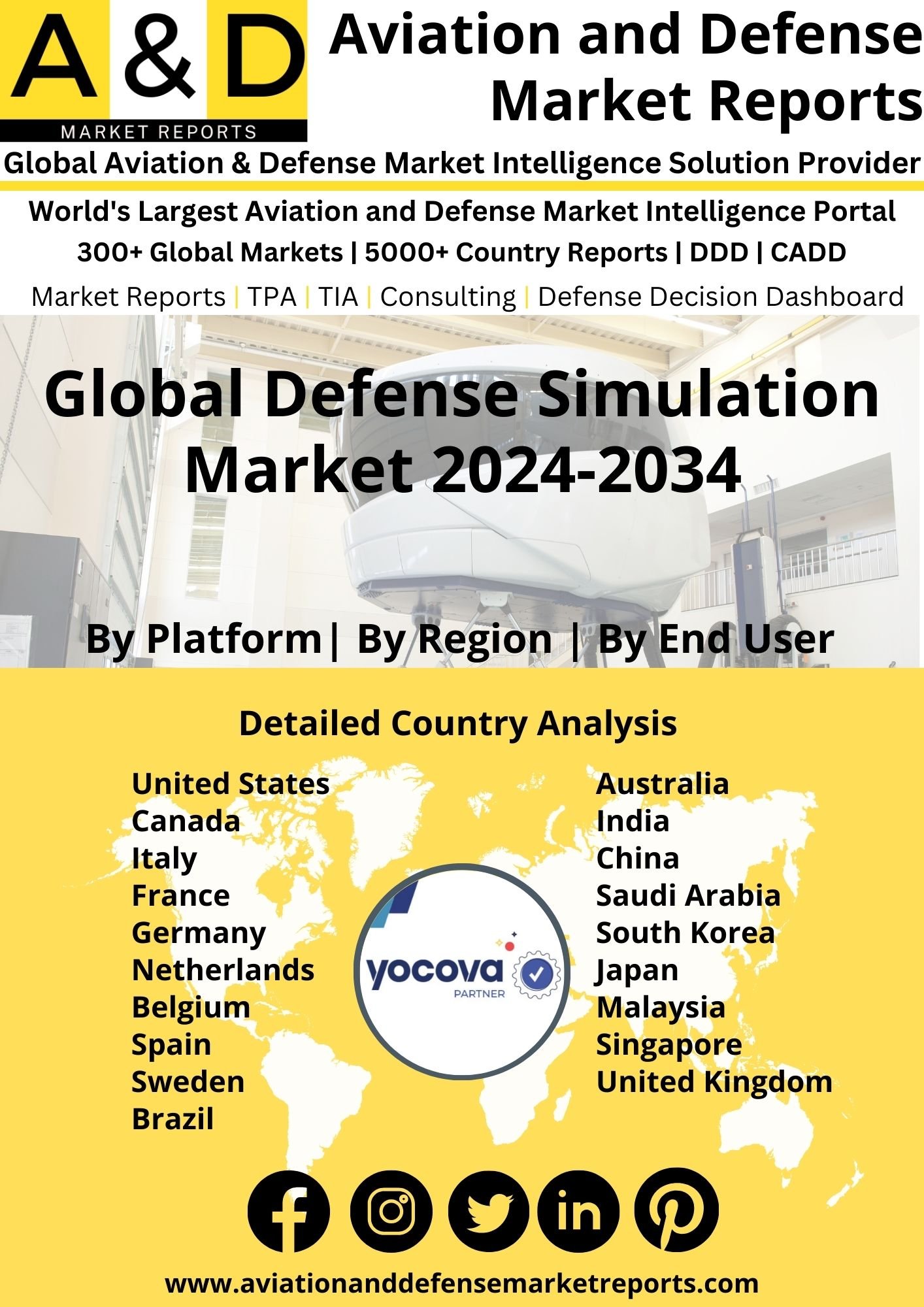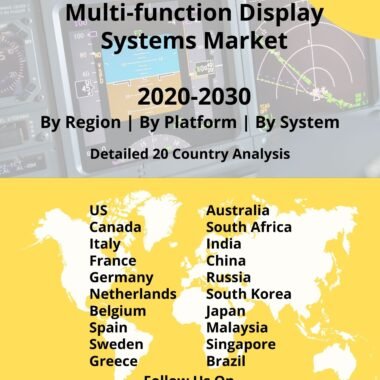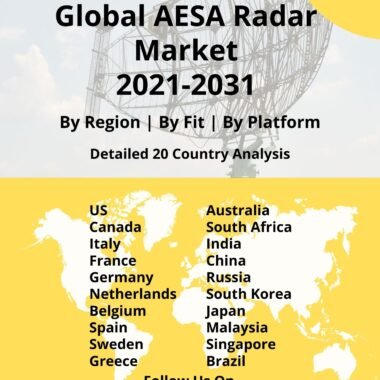Description
Global Defense Simulation Market
Frequently Asked Questions of Defense Simulation Market
Firearms, missiles, and cyber-attacks, the threats are constantly changing. Simulation systems give the warfighter an important advantage. The survivability simulation package enables the merging of hardware and sensors, ensuring mission success in the future multi-domain combat arena, where hazards are frequently hidden in plain sight. The benefit of seeing first and acting first is provided by agile detection and countermeasure systems. Sensing hazards at far ranges allows pilots to concentrate on getting the task done and returning safely. Incoming adaptive threats are defeated by combining sensors and countermeasure systems. In a 360-degree battlefield, simulation technology can personalize reactions to particular threats and scenarios while minimizing pilot effort and enhancing mission success. Real-time information flows between assets, increasing situational awareness and team survivability. The need of the hour is for open system design that allows plug-and-play fusion of sensors and hardware to construct powerful programs while decreasing size, weight, and power.
When troops come under fire, whether on the traditional battlefield or in asymmetric warfare across difficult terrain during low-intensity conflicts in urban areas or across the full spectrum of today’s peacekeeping activities, they need the fastest most accurate situational awareness to regain the initiative and complete their mission introducing.
Simulation systems with high-speed enemy fire detection, location, and classification for real-time situational awareness with a single unit covering in milliseconds of enemy fire, the simulation system warns of incoming threats enabling immediate evasive action accurately locating unlimited enemy positions and classifying all threats. For high-speed 360-degree day-and-night multi-threat detection, a specially developed artificial intelligence detects and pinpoints multiple sources of enemy fire and then classifies and informs crews of the type of incoming threat, even if it is not directed at the force itself, and an operationally mature human-machine interface is used. The simulation system delivers precise real-time situation awareness, as well as accurate fire source recognition and classification while tracking the sensor to the shooter.
Major factors driving Defense Simulation Market Growth
There is increasing demand for combat simulation systems as they are a cost-effective way to test defensive and offensive strategies. These simulation systems help in preserving human life by enabling near real-world training experience with accurate virtual modeling of threats and their behavior. The scalable solution is highly desirable as they enable the inclusion of multiple layers of threats and increase the credibility of the simulation. These are some of the major market trends that are driving market growth.
Trends influencing the Simulation Market Size
Machine autonomy solutions for amphibious vehicles, as well as aerial, ground, surface, and undersea vehicles that must operate in combat conditions are in demand. The hybrid engine that combines the power of a diesel engine with a silent electric motor is also one of the key market trends that influence the growth of the market. Advances in synthetic environment technology, such as computer picture production, are lowering the cost of cockpit simulators and making alternative uses possible. All simulation systems require strong validation, standardization, scalability, adaptability, efficacy, cost-effectiveness, and infrastructure. 3D printing and advanced image processing are also some of the market trends that influence the growth of the market.
Simulation Market Forecast & Dynamics
Increasing defense spending will enable the procurement of newer and advanced simulation systems. Nations are also investing in developing the next generation combat platforms, which will also act as a significant driver of the market. Procurement will also be driven by prevailing geo-political conditions in Europe and the Asia Pacific. The simulation market forecast includes a comprehensive market analysis and market size. The market analysis includes regional market size, drivers, restraints, and opportunities. The regional analysis also includes country-wise market size.
Defense Simulation Market Analysis for Recent Developments
Elbit Systems has been contracted by the Polish Air Force to supply F-16 mission simulators. The FMS is being purchased to help Polish Air Force F-16 pilots hone a wide variety of operational skills. The new reward is believed to be worth $36 million. It is good for a minimum of 28 months. The system will allow pilots in the Polish Air Force to practice and improve a wide variety of operational skills. It will include both basic aircraft familiarization sessions and advanced combat flight training in highly contested operational conditions.
Mercury Systems Inc., based in Andover, Mass., is launching the mPOD rapidly reprogrammable electronic attack flight simulation and training system, which will assist military pilots in training to deploy realistic electronic jamming capabilities. Tactical Air Support Inc. of Reno, Nevada, oversaw three days of flight testing and mission rehearsal that included beyond-visual range tactical intercept training encounters that replicated adversary tactics. F-5 jet fighter aircraft outfitted with Mercury’s mPOD electronic warfare (EW) training system broke, delayed, and denied opposing fighter radar locks, established many false targets on opposing fighter radar, and engaged in other electronic attack maneuvers.
At the Inter-American Air Forces Academy at Joint Base San Antonio-Lackland, virtual reality goggles and body-worn sensors are assisting in taking technical training to the next level. The equipment is part of a virtual reality simulator and is among the most recent pieces of equipment used to train international military students from partner nations. The SV-R simulator will be used to train Latin American military and law enforcement students in counter-narcotics operations and combating transnational criminal organizations. Instructors can create an infinite number of scenarios in a realistic training environment using the SV-R simulator. The simulator depicts the user as an avatar and allows users to interact with one another realistically, creating a true-to-life environment. The cutting-edge technology is being integrated into the curriculum of IAAFA’s Special Reactions Team and Ground Defense Leadership courses, where both new and advanced students can train in a controlled environment. By implementing this cutting-edge technology for its security forces flight, IAAFA is accelerating change. According to Alonso, it also serves as a model for Technical Training for Security Forces who are considering implementing a similar technology. Accelerating change is a recurring theme for the academy as it strives to modernize to meet the demands of a strategic competition environment.
Key Companies







